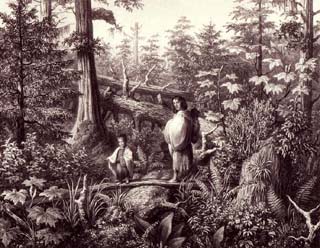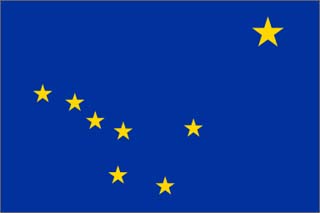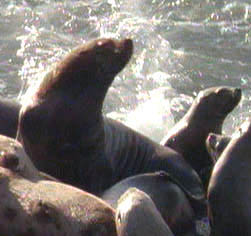 |
|
|
|
This list of
organisms directly involved in this case have been narrowed to five groups.
Provided for you is some general information about the organisms' eating
habits, size, and other notes. Create a diagram
showing the relationships between the organisms.
|
| MARINE
MAMMALS |
|
| Sea
otter, Enhydra lutris |
|
 |
- DIET:
clams, urchins, crabs, mussels, and occasionally fish and
sea birds
- AVG
SIZE: Body 55-130cm with a tail 13-33cm long and weighing
up to 45kg
- LIFE
SPAN: ~20 years
- PREDATORS:
sharks, (bald eagles & coyotes have been known to prey
on young pups)
- NOTE:
Only marine member in the weasel family (Mustelidae); largest
member of weasel family, but smallest marine mammal; rarely
comes ashore;
(U.S.
Fish & Wildlife Service, Marine Mammals Management Office,
October 2001; www.bbc.co.uk/nature/wildfacts/factfiles/600.shtml)
|
| Killer
whale, Orcinus orca |
|
Steller
sea lion, Eumetopias jubatus
|
|
|
|
- DIET:
marine mammals (other whales, seals, sea lions, walruses),
fish, squid, and occasionally sea birds, sea otters and
penguins
- AVG
SIZE: Males grow between 7-8m & weigh over 5,000kg.
Females grow between 5-7m & weigh over 3,000kg
- LIFE
SPAN: Males live ~35 years, but can reach 50-60 years. Females
average ~50 years but can reach 80-90 years.
- NOTE:
one of the most widespread mammals in the world and fastest
animals in the sea (55.5 km/h or 34.5 mph).
(www.bbc.co.uk/nature/wildfacts/factfiles/91.shtml)
|
- DIET:
Fish such as gadids (pollock, cod, hake, whiting, haddock),
salmon, squid, flatfish, herring, mackerel, capelin
- AVG
SIZE: Males (bulls) grow to 3m, 1000 kg. Females (cows)
grow to 2m, 300kg
- LIFE
SPAN: ~30 years
- PREDATORS:
sharks and killer whales
- NOTE:
the largest of the sea lions and will sometimes kill other
pinnipeds; known to make dives of 400m in search of food;
males are polygamous and territorial on land.
(Trites
and Donnelly, 2003; www.bbc.co.uk/nature/wildfacts/factfiles/171.shtml)
|
|
|
|
|
| KELP
FOREST |
|
|
Giant
Kelp, Macrocystic pyrifera

|
- DIET:
needs sunlight, nitrogen, phosphorus, carbon dioxide to
photosynthesize
- AVG
SIZE: 6 to 30 m
- DISTRIBUTION:
Alaska to Baja California, and west coast of South America,
southern Africa, and southern Australia
- PREDATORS:
herbivores, primarily sea urchins
- NOTE:
Tall stands of giant kelp make up a kelp forest
(
www.biology.ucsc.edu/people/raimondi/readdie/ecology.htm) |
|
|
|
|
| INVERTEBRATES |
|
|
Sea
uchins, Strongylocentrotus franciscanus and Strongylocentrotus
droebachiensis (Red & Green sea urchin)
- DIET:
kelp, macroalgae
- PREDATORS:
sea otters, humans, sea stars, crabs, wolf eels, lobsters,
and fishes
- DISTRIBUTION:
Red - Baja California to Alaska and Aleutian Islands to
Hokaido Island, Japan; Green - on Pacific coast from northern
Washington to Alaska.
- NOTE:
This is an echinoderm, related to sea stars and sea cucumbers.
About 5 to 35% of the sea urchin is roe, i.e. gonads, that
are extracted for consumption. This is a delicacy in many
seafood restaurants.
(www.dced.state.ak.us/cbd/seafood/recoveries)
|
Abalone,
Haliotis sp. (Flat & Pinto abalones)
- DIET:
marine algae
- PREDATORS:
sea otters, humans
- DISTRIBUTION:
Alaska to San Diego, California
- NOTE:
This is a marine snail, related to clams and squids. About
42% of the animal is edible meat, and the decorative shell
is used to make jewelry & other handicrafts.
(www.state.ak.us/local/akpages/FISH.GAME/notebook/shellfsh/abalone.htm;
www.dced.state.ak.us/cbd/seafood/recoveries/shellfish/shellfish14.htm)
|
|
Clams
- DIET:
microscopic plants & animals (clams are filter feeders)
- PREDATORS:
sea otters, humans
- DISTRIBUTION:
Alaska to Baja California
- NOTE:
This is a bivalve, and is related to octopods and mussels.
About 30 to 60% of the animal is edible meat, depending
on the species.
(www.dced.state.ak.us/cbd/seafood/recoveries)
|
|
|
|
|
|
| FISH |
|
|
Gadids
- DIET:
- PREDATORS:
- DISTRIBUTION:
- NOTE:
schooling fish; commercially valuable.
|
Herring,
Clupea pallasi
- DIET:
plankton
- PREDATORS:
sea lions
- DISTRIBUTION:
- NOTE:
schooling fish; commercially valuable.
|
|
Groundfish
- DIET:
- PREDATORS:
- DISTRIBUTION:
- NOTE:
flatfish; commercially valuable.
|
(Bond,
1996) |
|
|
|
|
| HUMANS |
|
|
Native
Alaskan tribes
Many
scholars theorize that aboriginal groups in Alaska came to
North America across the Bering land bridge from Northeast
Asia . The people settled and developed a variety of cultures
over several millennia since their first arrival.
- Eskimos
is one of the more numerous populations, and is made up
of more than twenty separate groups. They ranged from the
Arctic and Bering Sea coasts down to south central Alaska,
including Kodiak, and primarily stay inland. Their communities
are grouped into three major languages: Inupiaq in northern
regions of Alaska, Siberian and Central Yupik to the west,
and Sugpiaq to the south.
- The
Aleut live along the thousand-mile Aleutian Archipelago,
and had developed a seafaring culture acclimated to the
harsh environment. They were expert hunters at sea with
boats made of skin (baidarkas). They endured the greatest
impact from the Russian colonization.
- The
Tlingit, in southeastern Alaska, are the largest
native community. They traditionally controlled commerce
between coastal and native villages of the Canadian interiort.
Their more advanced culture and skills in warfare protected
them from Russian colonization.
- The
Haida, who emigrated in recent centuries to the southern
part of Prince of Wales Island, share many elements of culture
with the Tlingit and other tribes of the Pacific Northwest
Coast.
- The
Tsimshians on Annette Island migrated there from
British Columbia under the leadership of an Anglican priest,
Father William Duncan, in 1887. They also shared many cultural
elements with the Tlingit and other tribes of the Pacific
Northwest Coast.
|
- The
Athabaskans of interior Alaska, some of whom live
nearer to the coast in the Cook Inlet region, are linguistically
related to the southeastern Alaskan cultures as well as
to more southern Native Americans such as the Navajo. The
Athabaskans developed a far more nomadic lifestyle, however,
as they adapted to the necessity of following migratory
game.
- Creoles
have mixed Russian and native Alaskan ancestry. This term
is borrowed from the Creole of colonial France, and was
applied to people who typically had a Russian father and
a native mother. Creoles became an important source of Russian
labor for the tsarist colony. By the 1860s, the Creoles
easily outnumbered the Russians and were a mainstay of the
colonial economy.
|
|

(memory.loc.gov/intldl/mtfhtml/mfak/mfaknative.html)
|
|

|
Modern
inhabitants
- SIZE:
570,375 sq miles (1,477,268 sq km)
-
POPULATION: 610,000
- CAPITAL:
Juneau (population 31,000)
- PEOPLE:
75% Caucasian, 15% Inupiaq and other indigenous groups,
4% black, 3.2% Asian
- LANGUAGES:
English plus Native Alaskan languages
- RELIGION:
Christian
- MAJOR
INDUSTRIES : Oil and gas
(25% of US production), tourism, commercial
fishing, mining
(www.lonelyplanet.com/destinations/north_america/alaska/;
www.50states.com/alaska.htm) |
|
|
|
|
| |
This web
site was created by Lynn Tran at the North Carolina State University, Department
of Mathematics, Science, and Technology Education on 7/12/03. Faculty advisor
Dr. David Eggleston, NCSU, Department of Marine, Earth, & Atmospheric Sciences.
Last updated
December 29, 2003
.
|





